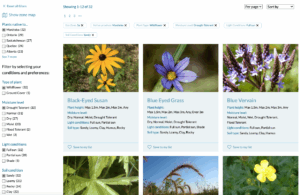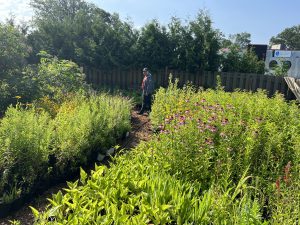Watersheds Canada's education toolkit about septic systems: https://watersheds.ca/septics Septic System Basics for Homeowners: https://www.youtube.com/watch?v=04ZIjz8kAPw This video addresses the basics of how a septic system functions and provides best maintenance practices for homeowners. FOCA Cottage Country Septic System: https://www.youtube.com/watch?v=ix9nbF8qUrA In this video made by Federation of Ontario Cottagers’ Associations guides you through all the ... Read More
Septic Systems – Public Perception and Awareness Survey
Return back to the Septic System Education Toolkit by clicking here! ... Read More
Cyanobacteria – Public Perception and Awareness Survey
... Read More
Changing your Shoreline Practices: Using The Natural Edge’s Native Plant Database
by Paige Jessup, Climate Resilience Intern What do you value most about your cottage? Maybe you like to go there and fish or swim, get out on the boat, or enjoy the quiet once you leave the city. In 2021, Watersheds Canada and Canadian Wildlife Federation conducted a survey to find out what shoreline property owners value most. The top three values selected were Water Quality, Swimming, and Scenery/View (Love Your Lake, 2021). However, most actions taken along the shoreline didn’t match with ... Read More
Pool and Hot Tub Pollution – Public Perception and Awareness Survey
... Read More
Watersheds Canada National Conference 2025
WHEN: May 1-2, 2025 WHERE: Haliburton, ON WHAT HAPPENED: You immersed yourself in Watersheds Canada’s inaugural conference where inspiration leads to action! We gathered together fellow lake and watershed enthusiasts for an engaging experience that took you beyond the conference room and into the field with hands-on stewardship project demonstrations and interactive seminars. Passionate lake leaders and environmental professionals networked, we shared innovative success stories, and we ... Read More
Enter to win a beautifully hand-crafted Belted Kingfisher!
Enter a contest to win a beautifully hand-crafted, new decorative Belted Kingfisher carving generously donated to Watersheds Canada by Canadian artist, Mike Reader: Belted Kingfisher are a common visitor to river and shoreline areas, nesting along banks and hunting almost exclusively on aquatic prey. You may have had the treat of hearing the rattling call of the kingfisher even if you haven't been able to spot it. Healthy riparian habitat is critical for Belted Kingfisher to thrive as ... Read More
Sowing the Seeds of Change with Community Gardens
by Ty Fischer, Riparian Health Restoration Intern Community gardens can vary widely in their purpose and design, but all of them share one common goal: to bring people together in creating and maintaining a thriving greenspace that benefits both humans and native wildlife. That’s why building a community garden is one of the greening projects offered by the Ottawa Faith Community Capacity Building Program, a joint effort between Greening Sacred Spaces Ottawa and Watersheds Canada. This ... Read More
Light Pollution – Public Perception and Awareness Survey
*Questions with an asterisk must be answered before the survey can be submitted. ... Read More
Road Salt Pollution – Public Perception and Awareness Survey
... Read More




